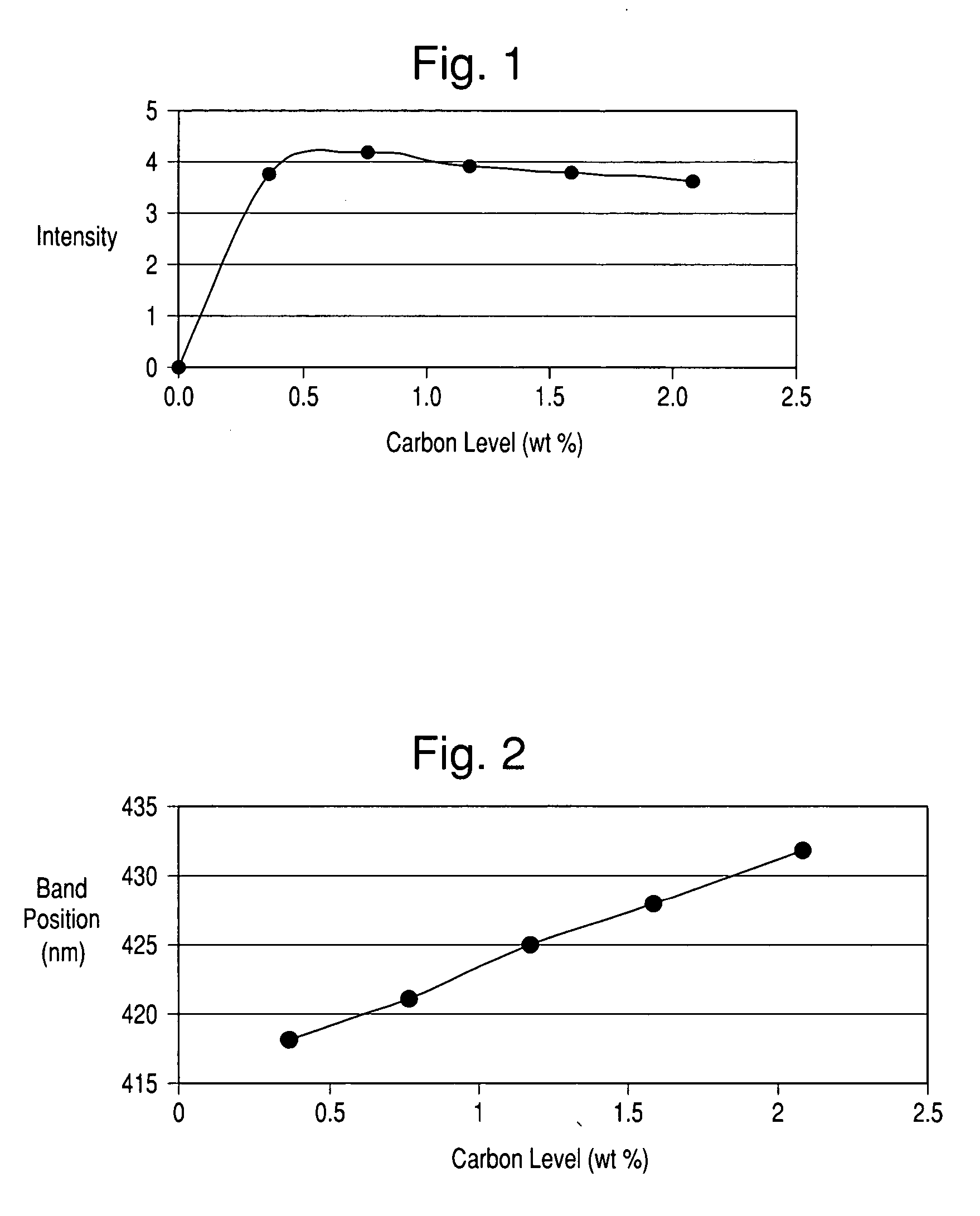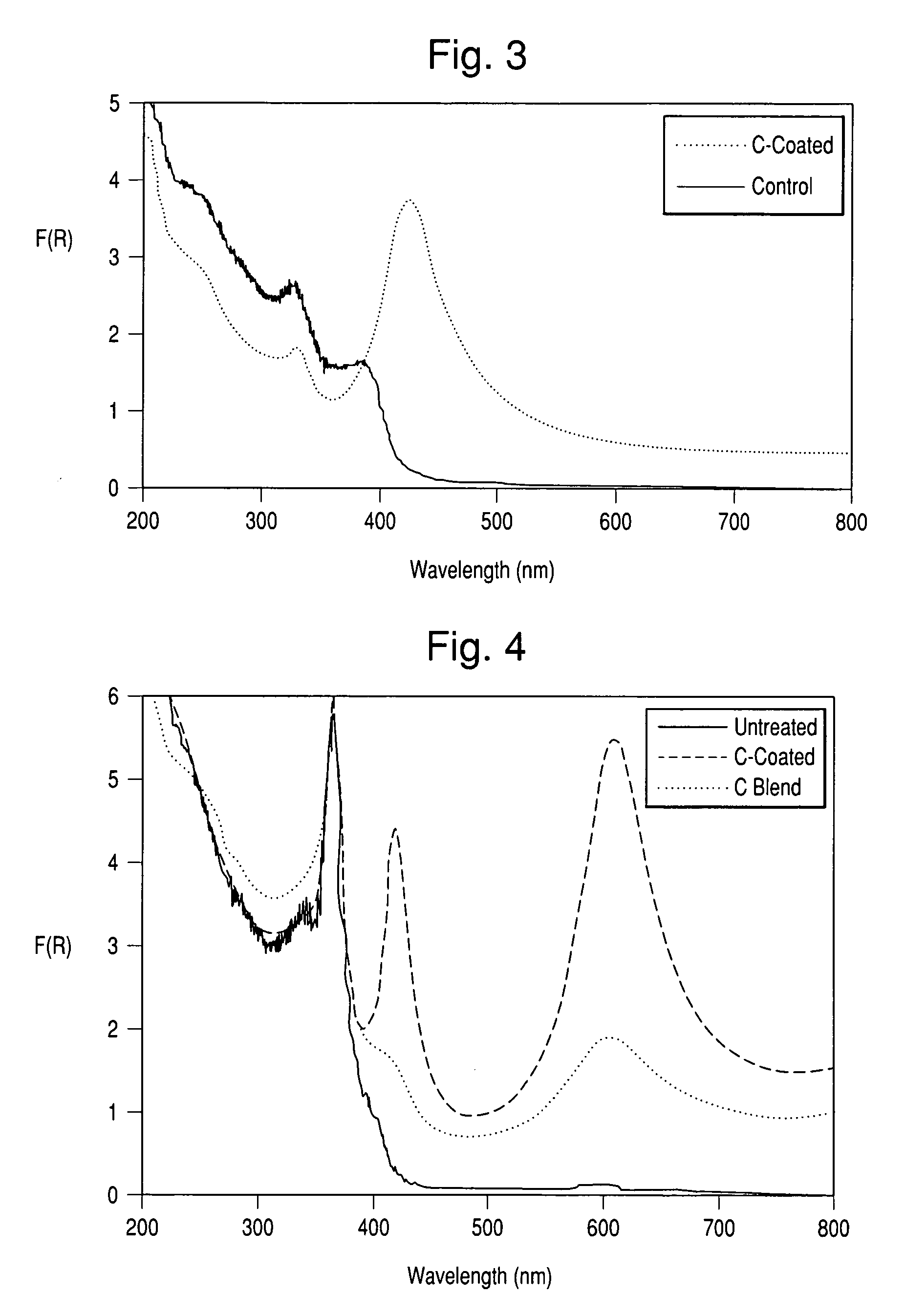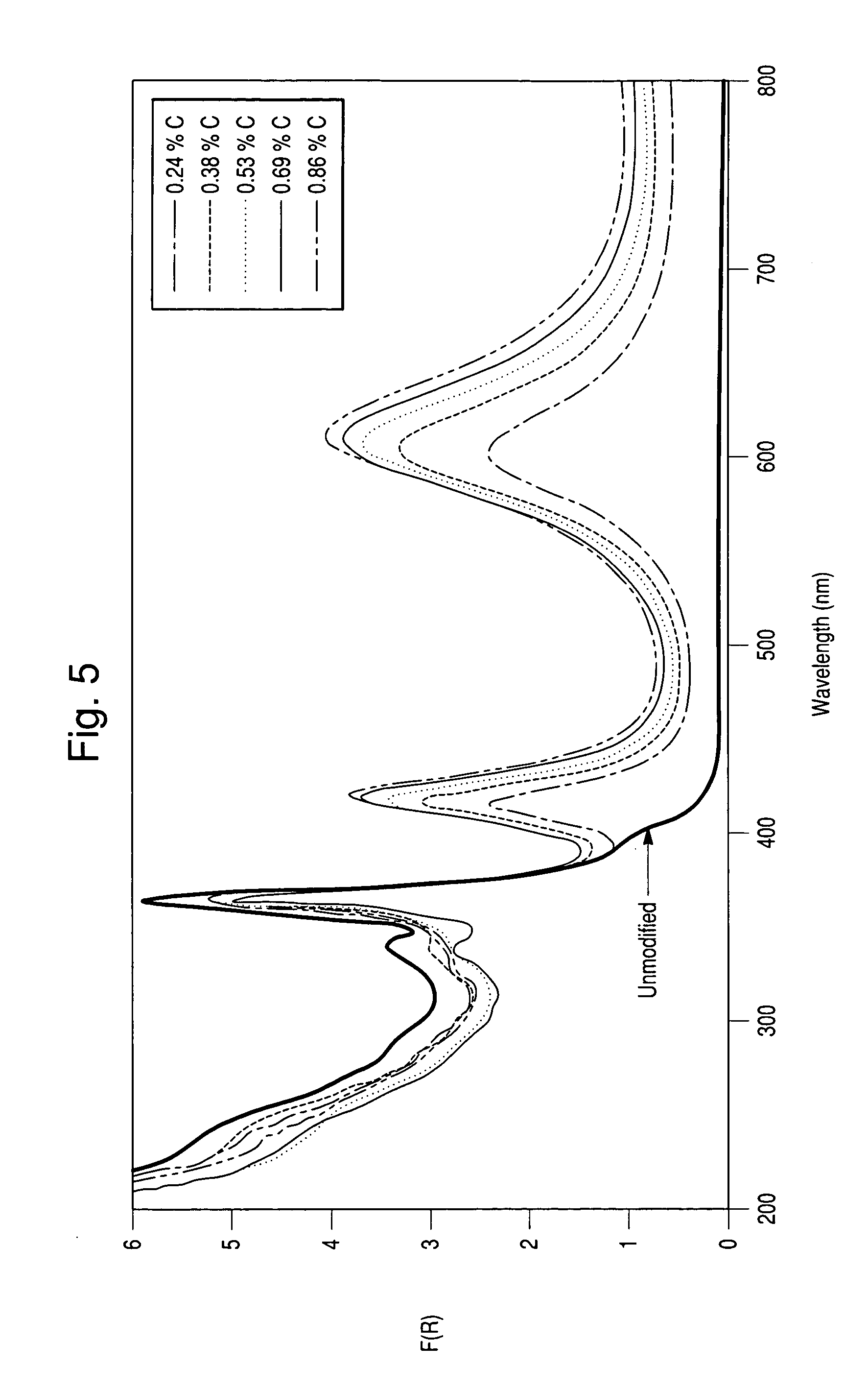Carbon coated high luster materials
a high luster material and carbon coating technology, applied in the field of carbon coating high luster materials, can solve the problems of reducing the optical effect of the pigment, reducing the hiding power of the effect material, and producing pigments with insufficient wear resistan
- Summary
- Abstract
- Description
- Claims
- Application Information
AI Technical Summary
Problems solved by technology
Method used
Image
Examples
example 1
[0060] A 1% w / w solution of poly(diallyldimethyl ammonium chloride) (PDADMAC) in 0.1 M NaCl was prepared, and the pH adjusted to 9.5 using a 0.1 M ammonia solution. To 100 ml of this solution, 20 g of either TiO2-coated mica of 50 μm particle size, 20 μm platy mica or 100 μm TiO2-coated glass flakes was added, and the mixture stirred for 15 minutes at room temperature. After 15 minutes, the substrate was recovered by filtration and washed with an excess of deionized water. This polymer treatment conferred a positive charge on the substrate.
[0061] The substrate was then slurred in 100 ml of a 1% w / w solution of poly(sodium 4-styrene sulfonate) (PSS) in 0.1 M NaCl, adjusted to pH 9.5 using 0.1 M ammonia for 15 minutes at room temperature and under continuous agitation. Following this treatment, the substrate was collected by filtration and washed with deionized water to remove excess, unattached polymer.
[0062] One treatment with PDADMAC followed by one treatment with PSS was defined...
example 2
[0065] The polymer deposition procedure as carried out in Example 1 was performed on a TiO2-coated mica having a particle size of approximately 20 μm, a TiO2-coated mica having a particle size of approximately 50 μm and TiO2-coated borosilicate glass flakes having a particle size approximately 100 μm. Following polymer deposition, pyrolysis was performed at various temperatures using a gaseous flow comprised of 1% CO2 in N2, as opposed to the pure nitrogen atmosphere used in Example 1 above. Following this pyrolysis, elemental analyses were performed to determine the carbon contents of the materials. These analyses are summarized in Tables 2a, 2b and 2c. In addition, drawdown films were prepared to evaluate the jet-black nature of the carbon coating produced. Inspection revealed that the carbon color was of jet-black color similar to that of the reference drawdown film. Elemental analysis also showed that more of the carbon was retained at elevated temperatures than with pyrolysis i...
example 3
[0066] Polymer deposition and subsequent pyrolysis to produce a carbon coating was performed on an iron oxide-coated mica using the procedure set forth in Example 1. Following multiple polymer deposition steps, pyrolysis at 600° C. in CO2 / N2 for two hours produced a dark brown sample that was magnetic. X-ray diffraction data were used to confirm that reduction of the Fe (III) had taken place to yield Fe3O4, a mixed Fe (II, III) oxide. Visual inspection of drawdown films prepared from these materials indicates that the level of polymer deposition influences the degree of iron reduction. Further, heating the substrate with no added polymer at 600° C. in CO2 / N2 for two hours also seems to promote a color change in the material. The hiding power of the treated materials with some Fe3O4 content is greater than the untreated material.
PUM
| Property | Measurement | Unit |
|---|---|---|
| temperature | aaaaa | aaaaa |
| thickness | aaaaa | aaaaa |
| thickness | aaaaa | aaaaa |
Abstract
Description
Claims
Application Information
 Login to View More
Login to View More - R&D
- Intellectual Property
- Life Sciences
- Materials
- Tech Scout
- Unparalleled Data Quality
- Higher Quality Content
- 60% Fewer Hallucinations
Browse by: Latest US Patents, China's latest patents, Technical Efficacy Thesaurus, Application Domain, Technology Topic, Popular Technical Reports.
© 2025 PatSnap. All rights reserved.Legal|Privacy policy|Modern Slavery Act Transparency Statement|Sitemap|About US| Contact US: help@patsnap.com



